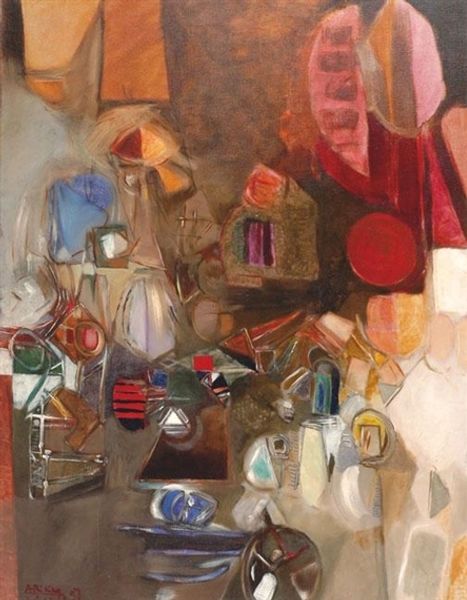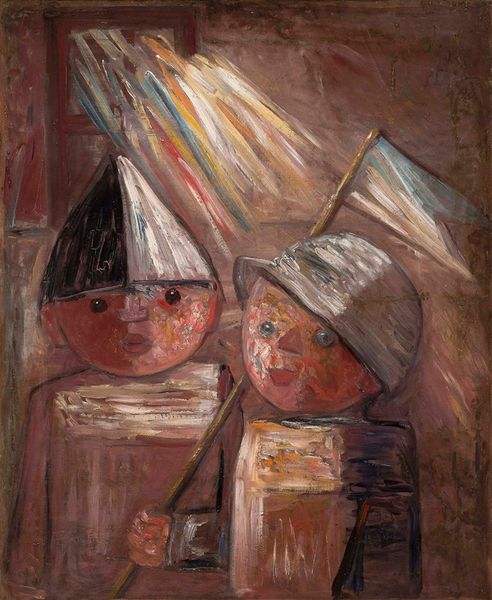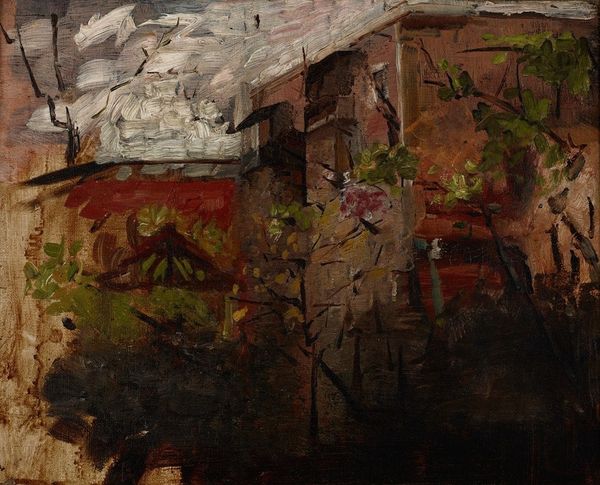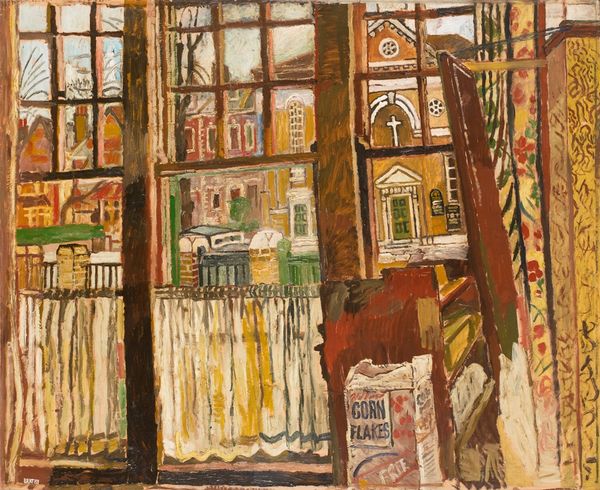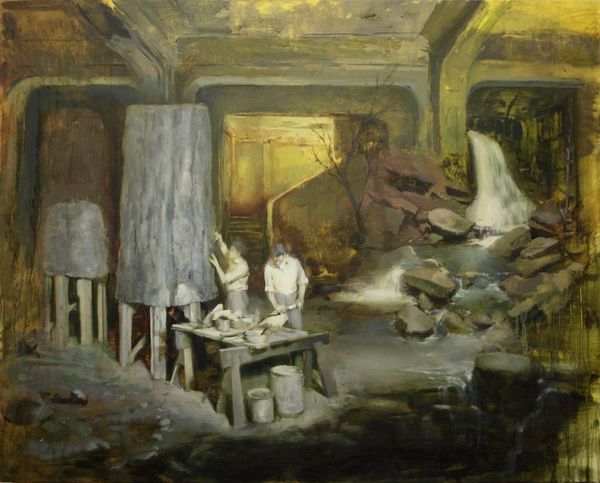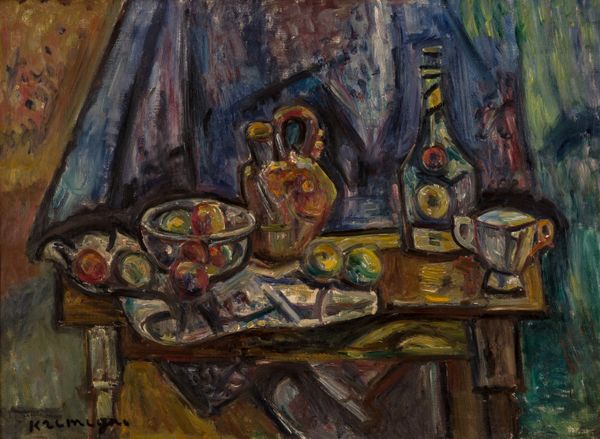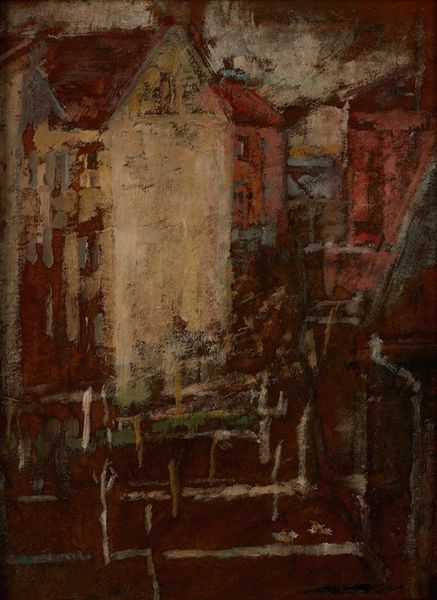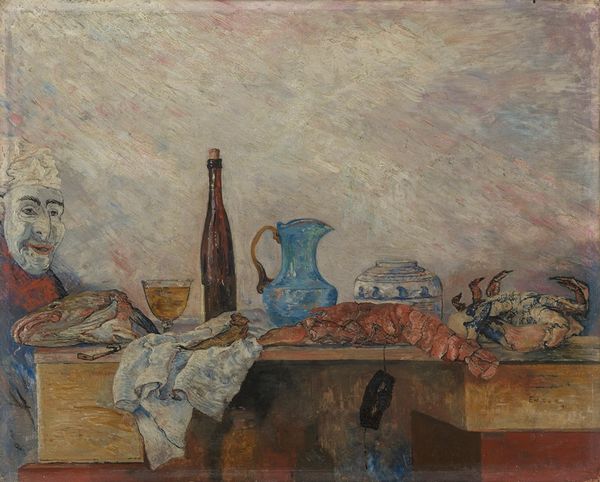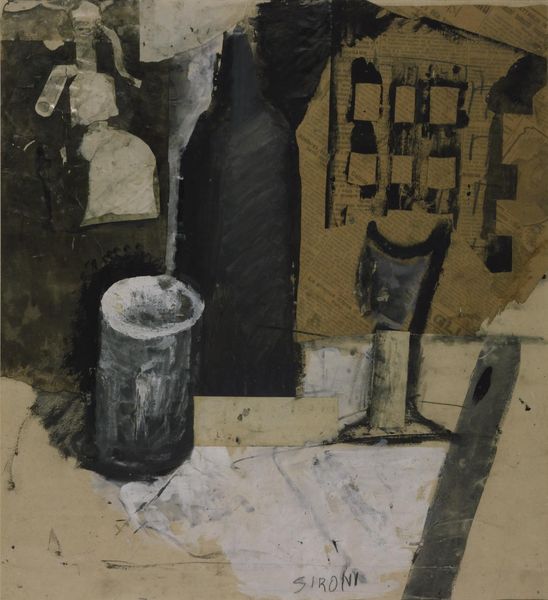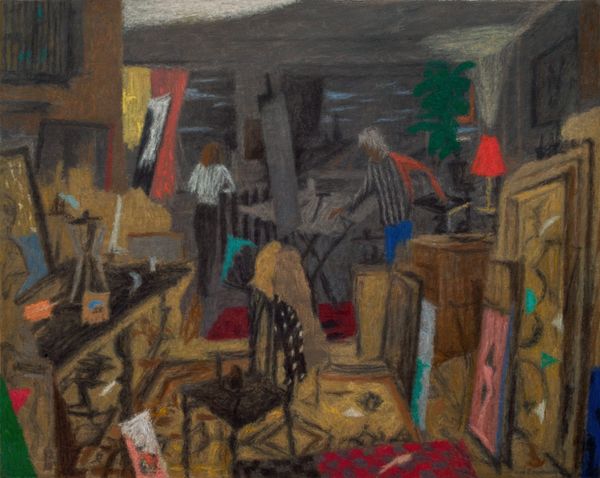
painting, oil-paint
#
portrait
#
cubism
#
painting
#
oil-paint
#
figuration
#
oil painting
#
history-painting
Copyright: Public Domain: Artvee
Editor: So, this is "In a Bar," an oil painting by Tadeusz Makowski from 1931. The figures have a geometric, almost toy-like quality. How do you interpret this work, especially considering it's from the early 1930s? Curator: Immediately, I'm struck by the cubist influences and how they intersect with the socio-political context of the time. Makowski's figures, rendered with these blocky, almost dehumanized forms, can be seen as a reflection on the alienation and anxieties of interwar society. What do you make of their anonymity? Editor: I hadn't considered the alienation angle. Their faces *are* quite blank. Do you think this anonymity is a commentary on class? Perhaps the figures are meant to represent a working class made homogenous? Curator: It's plausible. But let's also consider the bar itself. It's a space that historically provided refuge, but also fostered political discourse. Makowski, painting in a period of rising fascism and economic instability, may be using this setting to question the effectiveness of such spaces. Does their conversation seem to be going anywhere? Editor: It does feel very static, almost frozen. It makes me wonder what they might be talking about...or *not* talking about. Do you think the colours, those muddy reds and browns, contribute to the feeling of unease? Curator: Absolutely. They evoke a sense of decay and confinement. They also draw attention to who gets to be comfortable, or even visible, within such spaces. It's worth considering who *isn't* represented here, whose voices are absent. Editor: That's a really good point. This whole conversation has opened up a richer understanding. I'm going to go read more about interwar Poland! Curator: Excellent! It shows us that even seemingly simple scenes can reveal deeper historical narratives about identity and belonging.
Comments
No comments
Be the first to comment and join the conversation on the ultimate creative platform.
